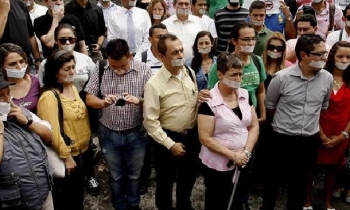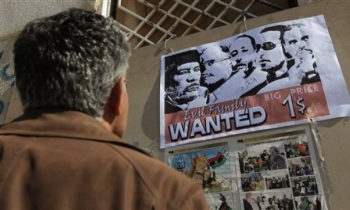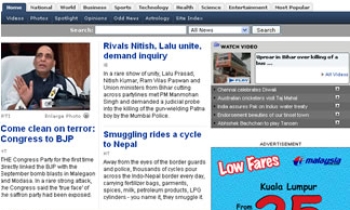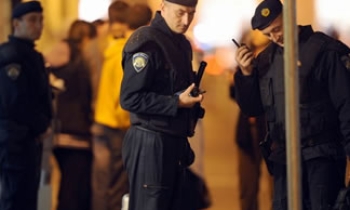Since fighting resumed in 2006 between the Sri Lankan government and the Liberation Tigers of Tamil Eelam (LTTE), the Tamil-populated Jaffna peninsula has become a nightmare for journalists, human rights activists and the civilian population in general.
Murders, kidnappings, threats and censorship have made Jaffna one of the world’s most dangerous places for journalists to work in. Seven media workers, including two journalists, have been killed there since May 2006. One journalist is missing and at least three media outlets have been physically attacked. Dozens of journalists have fled the area or abandoned the profession. None of these incidents has been seriously investigated despite government promises and the existence of suspects.
These findings are from a report about the plight of the press in northern Sri Lanka, entitled "Jaffna’s media in the grip of terror" which was released Friday by Reporters sans Frontières (RSF) and International Media Support, two members of the international press freedom mission to Sri Lanka.
When the mission carried out a joint factfinding trip to Sri Lanka in June, it found that grave press freedom violations have been taking place in the isolated, Tamil-populated Jaffna peninsula, which has been badly hit by the fighting between government forces and LTTE.
"Jaffna’s media in the grip of terror" is the first of three reports being prepared by the international mission. The results of its investigations in the east of the island and in Colombo will be published in the coming weeks.
Last March, the international mission published a factfinding report on the overall press freedom situation in Sri Lanka, titled "The Struggle for Survival." It included recommendations to all parties to the conflict about the safety of journalists and official and unofficial censorship.
Since the attack on May 2 last year on the offices of the Jaffna district’s most popular daily paper, Uthayan, local journalists have lived and worked in fear. One paper shut down after its editor was murdered and only three dailies are now published. Newspapers have lost 90 per cent of their staff in the past year, as young journalists and other staff have fled the business, often under pressure from their families.
The paper Valampuri now has only five correspondents in the district, down from 75 in August last year. “We carry more national and international news than local reports because our staff are afraid,” its editor said. “We all know that a life is worth more than a news story.”
The staff of Uthayan, with a circulation of over 5,000, is now down to three senior journalists and one young reporter. One of the journalists has not left the office for 13 months for fear of being gunned down the moment he steps outside.
Nation and international media correspondents are steadily leaving the district or the country after getting death threats by phone or text-message. While the factfinding mission was in Jaffna, the last full-time foreign media correspondent got a text-message and a call from a sat-phone saying it was his last warning before he was killed. He left Jaffna the next day.
The Sri Lankan army is expected to launch a major offensive in the north after successes against the LTTE in the east, but the media in Jaffna is living in terror. The government and President Mahinda Rajapaksa must urgently promise to protect journalists and guarantee press freedom, the mission members said.









